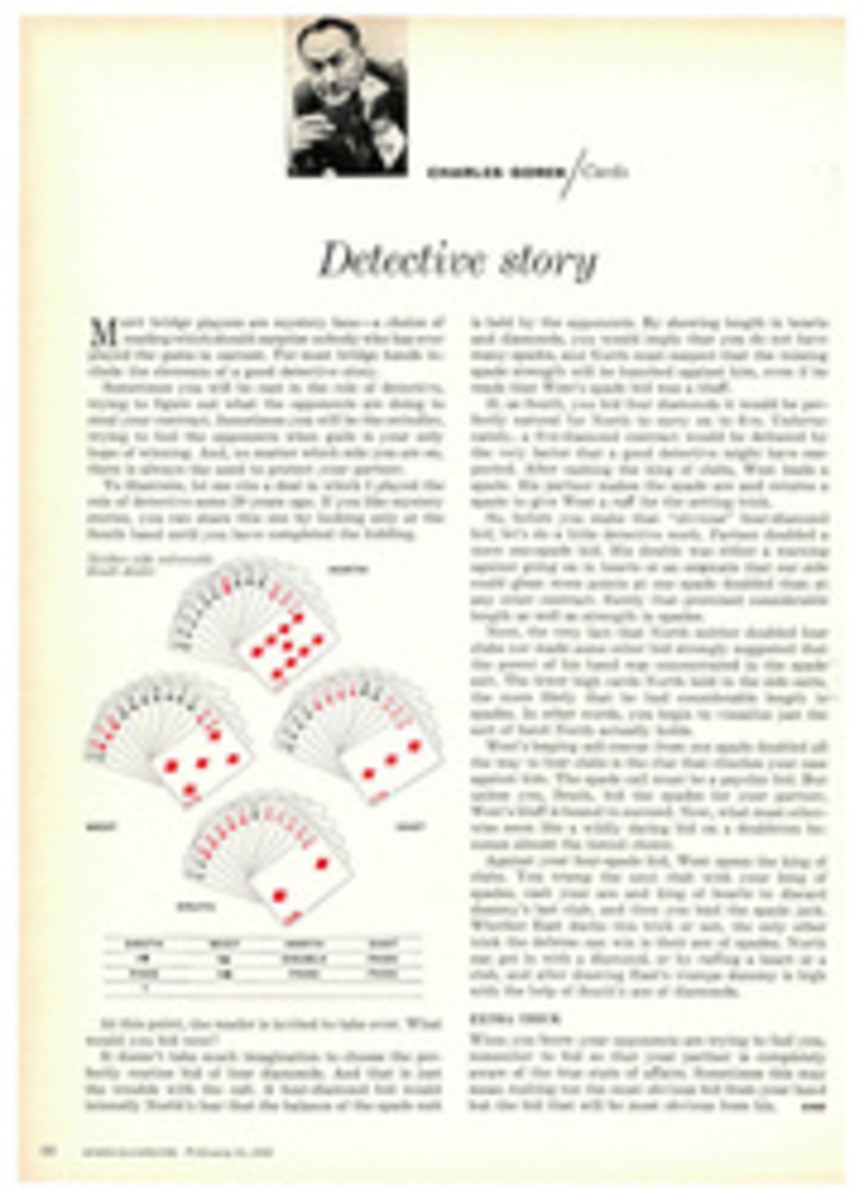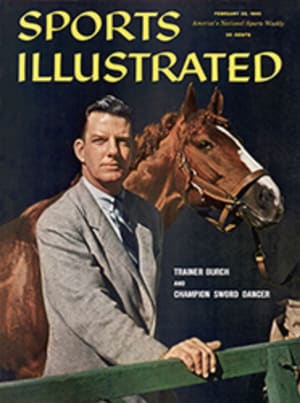
A Pair of Natural Aces
This last November, as Australian boys and girls were cut loose from school for their summer holidays, the 600 students of Sydney Technical High School got some solid farewell advice from their graduating student body captain. "It is obvious," wrote John Konrads in the Sydney Tech yearbook, "that success can only be achieved through hard work, not only in studies but in sport and society." The message was considerably reinforced by the rewards 17-year-old John Konrads had earned by graduation time. From school he got one A and six B's and a prize for leadership, scholarship and sportsmanship. From the world at large, in the past two years, he has received more honors for his success as a swimmer than any man since Weissmuller.
A few miles away from Sydney Tech, at Birrong Girls High School, the headmaster appended an approving note to the year-end report of Konrads' 16-year-old sister Ilsa, who graduates next November. Ilsa Konrads, the headmaster observed, "is a good, quiet student whose work has shown big improvement." Sister Ilsa has always been the quieter of the famous pair, but in their special realm of swimming, where noise counts for nothing, she has pulled even with brother John. Each Konrads now holds six of the 10 freestyle records recognized for men and women.
WILLING SLAVES TO WORK
Two years ago, when they took over from the triumphant veterans of the 1956 Olympics, the pair became fondly known the world over as the Konrads kids. They are still breaking records, but they are kids no longer—as anyone seeing young Ilsa in a skintight tank suit will readily confirm. Though sophisticated by swimming sorties into 14 foreign countries, the Konradses still are willing slaves to the ideal of hard work and little glory back at the hometown Bankstown pool. In the past two years each has swum more than 2,500 miles, and each will probably swim another thousand between now and the Olympic Games at Rome. In the New South Wales championships last month, Ilsa Konrads set a new world record of 4:45.4 for 440 yards and brother John lowered his own 220-yard record to 2:01.9. But there will be little letup for either between now and the 1960 Games. Neither Konrads is a sure bet to win even his distance specialties at the Olympics. At 1,500 meters John is still body lengths ahead of anybody, but at 400 meters Tsuyoshi Yamanaka of Japan is matching him stroke for stroke. In her distance specialty, 400 meters, Ilsa Konrads now has a clearer shot at the title than her brother, though by next August any one of a half dozen Australian, American or Dutch girls might beat her to the finish wall.
The Konrads pair are entering what in swimming might be called most accurately the dangerous age. It is a virtue and at the same time a peculiar weakness of the sport that the age of competitors has never been an inhibiting factor. Youngsters have often ruled the sport, collecting the medals, seeing the world—and then, having hit the top early, by the age of 18 have become so jaded that they found nothing left in the monotony of training except a strong taste of chlorine. How both Konradses manage to survive the grinding work without going stale is a question whose answers lie principally in physiology and the whole curious pattern of their pressure-packed way of life.
The noted swimming coach and graduate physiologist Forbes Carlile recently put both Konradses through three hours of tests to find out how they were standing up in their last tough, pre-Olympic campaign. Carlile found them to be extraordinary specimens working well within their limits. John Konrads at 5 feet 10½ inches and 182 pounds has a lung capacity of 6.5 liters, almost a third more than an average man of comparable size. The electrocardiogram indicates that his outsize heart has a pumping capacity equal to that of the great Australian milers, Landy and Elliott. Ilsa is even more phenomenal: considering her sex and size, her capacity exceeds them all. Ilsa, who started record-breaking as a gangling 13-year-old, stands now 5 feet 8½ inches and, unbelievably, weighs 150 pounds. No one can truly say where she puts all that weight, for it only shows where it should.
The Konrads home is a big factor in their constant fresh enthusiasm for the long workouts. Their house is a modest brick-and-weatherboard rented bungalow just a few yards from the busy Hume Highway linking Sydney with Melbourne. Though its six rooms are neatly arranged, there are plenty of reminders that swimmers live there. The dining room buffet is laden with trophies, and brightly colored towels and swim-suits, flung down with customary teen-age abandon, adorn the chairs and beds in their rooms. The walls of John's room are festooned with pictures of swimmers, pennants and a large Welsh flag that somehow vanished from Cardiff after the last Empire Games.
John and Ilsa's mother and father, a quiet refugee couple who fled from the Communist occupation of their Latvian homeland, have cheerfully accepted the extra financial problems that have arisen since their children became world-beaters. Training and travel cost money, and with John Konrads Sr.'s earnings as a dental technician coming to the equivalent of $105 weekly, the parents have had to sacrifice. Mother Elza Konrads, a pleasant, gray-haired lady of 55, has no complaints. "My husband and I count for nothing," she has observed. "John and Ilsa now have names you can't buy with money, and it will help them in later life."
The stern and almost daily demands of topnotch swimming rule out many of the comforts of a normal home life. From September through mid-April—the critical months for competitive swimmers down under—the Konradses' routine would do the old Greeks of Sparta proud. In the pre-dawn, at 5:30 a.m., before even the great Australian runners who follow the ascetic Cerutty have set foot on a sand dune, while cricketers and footballers are still snoring and the world-famous tennis men are still dreaming of service aces, the Konrads pair are up and dressed. By 6 o'clock they have eaten steak or chopped beef, eggs and coffee and are headed for the Bankstown pool two miles away. Even by six in the morning, Bankstown's green waters are lashed into choppy waves by the flailing and kicking of hundreds of Aussie youngsters bent on someday beating the Konradses. Somehow the Konradses make their way through the thrashing humanity to complete their morning stint by 7:30.
For most of the swimming season, school is the next stop. At 4 o'clock the Konradses report to Bankstown again to wind up their daily four hours, as Coach Don Talbot, stop watch in hand, strides up and down shouting encouragement ("Go, man, go") or criticism ("You're disgracing us"). If there is no homework, John and Ilsa are usually too tired for anything more energetic than spinning a few records on the family "radiogram." They go to bed early, only occasionally finding the time to indulge in other teen-age activities.
Despite its obvious natatorial adornments, the Konrads home functions more as a refuge from swimming than as an operations camp for planning new forays against the record book. Swimming is rarely discussed except to oblige the interests of a visitor. For all their dedication to swimming, the Konradses remain a personable and well-mannered pair. John exhibits more and more a worldly aplomb, but Ilsa is still somewhat embarrassed by the almost constant publicity.
With Australia's National Championships about to begin and the Rome Olympics coming up, a great, teasing question has naturally arisen: can the Konradses pull off twin grand slams by capturing every freestyle record and all the freestyle gold at Rome? The answer is: very probably not. John's chances at present seem the better, but still they are slim. He still has to regain his 200-meter and 400-meter records from Japan's Yamanaka and lick his fellow Australian, world-record holder John Devitt, at 100 meters and 110 yards. Though he will be obliged to swim longer than metric distances in the Australian Nationals, and thus will be handicapped in trying to take metric marks back from Yamanaka, John has entered all freestyle events, from 110 to 1,650 yards, and plans to swim "flat out" in all. Ilsa's prospects for a grand slam are virtually nullified so long as the Australian sprint veteran, Dawn Fraser, continues in excellent form.
However long either or both of them is good for in the top ranks of swimming, there is no doubt that the Konradses are one of the nicest brother-sister acts that ever played the boards anywhere. One of the charming sidelights of all the meets in which they compete is the genuine joy, usually manifest in bear hugs, that each shows when the other wins. The close bond has existed, Mother Elza Konrads testifies, since early childhood, when Ilsa preferred playing American cowboys and Indians with John rather than dawdling with dolls. Their capacity to share, as it were, both the lonely work of training and the glory is doubtless the big factor in their continuing enthusiasm for a sport where monotony can be a real bugaboo. If the ennui of the dangerous age is beginning to tell on them, neither Konrads is aware of it. To an interviewer who recently asked them if they felt they were being treated like performing seals, John snapped, "Do we look unhappy, worn out, bullied or downtrodden? We are doing what we love to do, and we wouldn't change a moment of it."
PHOTO
JERRY COOKE
YOUNG STARS John and Ilsa Konrads have led the swimming world since 1958.
PHOTO
IN OFF SEASON John and Ilsa do bodybuilding exercises on pulley weights rigged on wall of their house.

